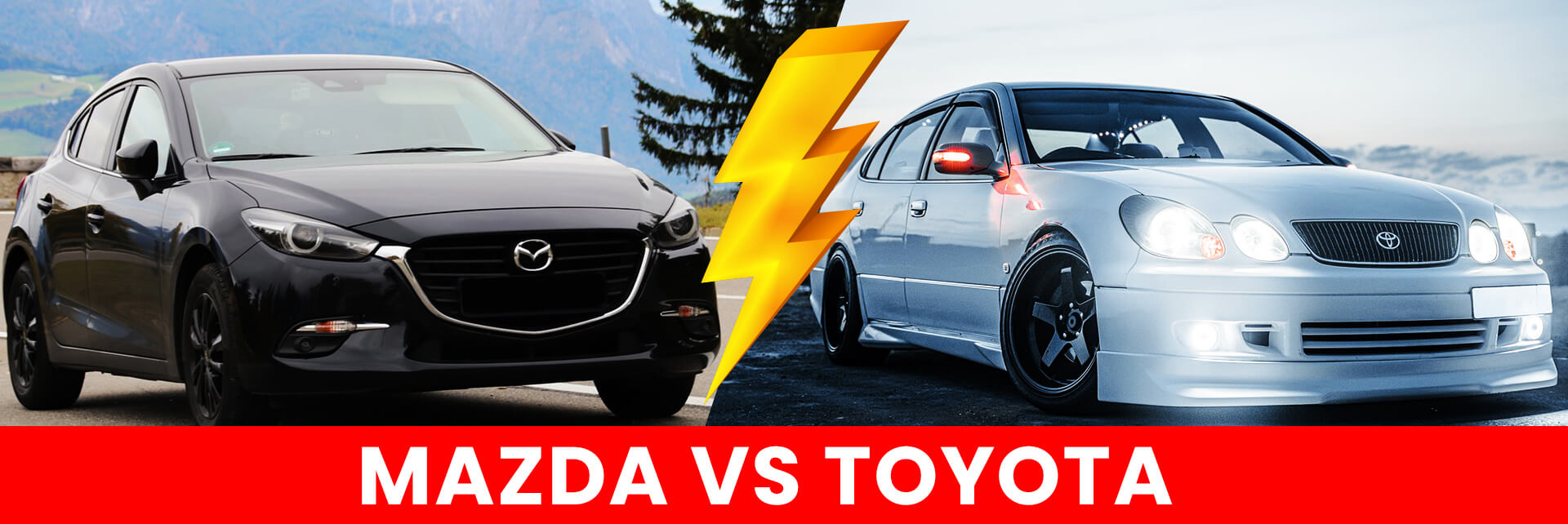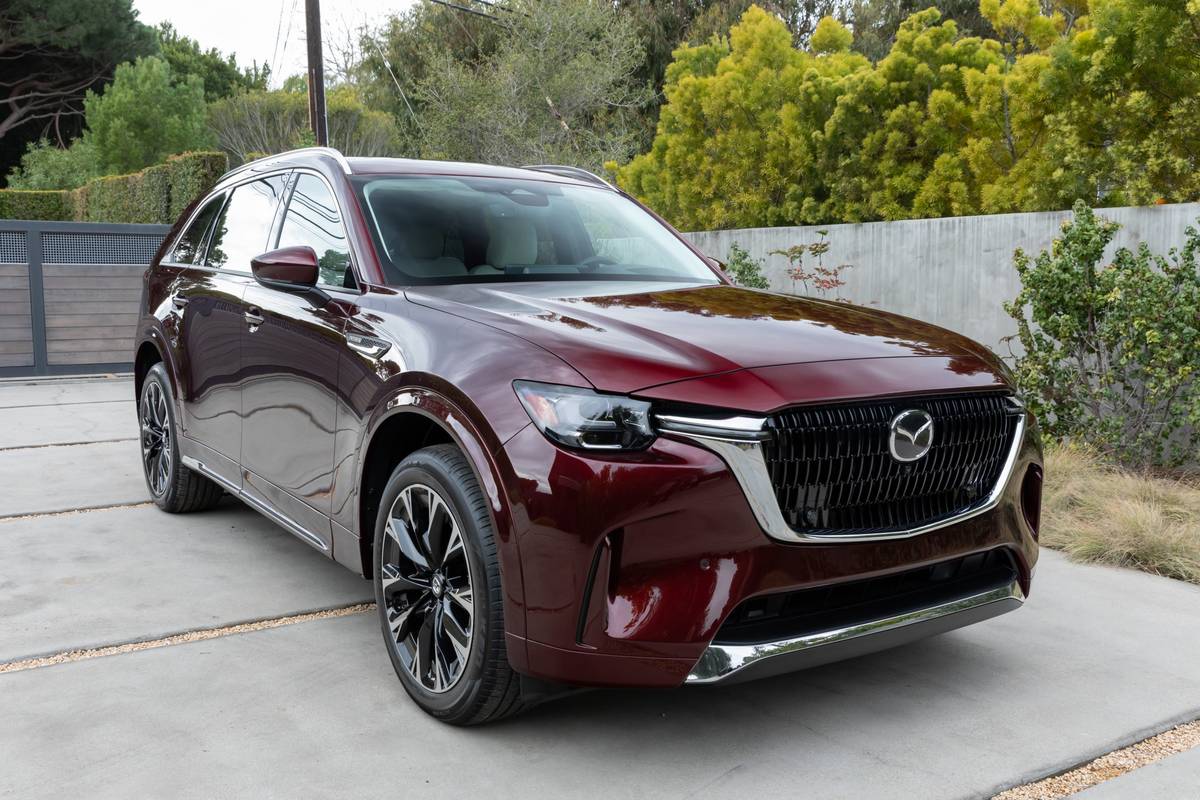Is Mazda A Good Car Brand? A Comprehensive Guide cars.truckstrend.com
In the vast and competitive automotive landscape, discerning consumers often find themselves asking: "Is Mazda a good car brand?" This question is not merely about reliability or affordability; it delves into the core identity of a brand, its design philosophy, driving dynamics, safety innovations, and overall value proposition. For decades, Mazda has carved out a unique niche, often praised by automotive journalists and enthusiasts for its engaging driving experience and distinctive design, yet it doesn’t always command the same mainstream attention as giants like Toyota or Honda. This comprehensive guide will explore various facets of Mazda, helping you understand why it consistently stands out as a compelling choice for many drivers.
The Evolution of Mazda: A Journey of Innovation
Is Mazda A Good Car Brand? A Comprehensive Guide
Mazda’s journey in the automotive world is one marked by resilience, innovation, and a distinct vision. Founded in 1920 in Hiroshima, Japan, the company initially produced machine tools and then three-wheeled trucks. Its foray into passenger cars began in the 1960s, notably with its pioneering work on the Wankel rotary engine, which famously powered the RX-7 and RX-8 sports cars.
While the rotary engine remains a unique part of Mazda’s heritage, its modern identity was largely shaped after its long-standing partnership with Ford concluded in 2015. This period saw Mazda double down on its independent engineering philosophy, leading to the development of Skyactiv Technology. Launched in the early 2010s, Skyactiv is not just an engine but a holistic approach to car manufacturing, encompassing highly efficient engines, lighter and stronger body structures, optimized transmissions, and refined chassis components. This integrated approach aims to deliver a harmonious blend of performance, fuel economy, and driving pleasure, proving that Mazda’s commitment to innovation runs deep.
Design Philosophy: Kodo – Soul of Motion
One of the most striking aspects of modern Mazdas is their design. The Kodo – Soul of Motion design language, introduced over a decade ago, transformed Mazda’s vehicles from competent but somewhat anonymous cars into truly captivating machines. Kodo emphasizes fluidity, motion, and a sense of vitality, drawing inspiration from the beauty of nature and living creatures.
Unlike some brands that rely on aggressive lines and busy styling, Kodo design is characterized by its elegant simplicity, sculpted surfaces, and minimal character lines. This creates a sophisticated, almost artistic aesthetic that allows light and shadow to play across the bodywork, giving the vehicles a dynamic presence even when stationary.
Inside, Mazda’s interiors reflect the same commitment to craftsmanship and thoughtful design. The cabins are driver-centric, with controls intuitively placed and high-quality materials used throughout, often exceeding expectations for their price point. The focus is on ergonomics, comfort, and creating a refined, premium feel that enhances the driving experience.
Driving Dynamics and Performance: The "Zoom-Zoom" Legacy
The unofficial slogan "Zoom-Zoom" perfectly encapsulates Mazda’s unwavering commitment to making cars that are genuinely fun to drive. While other manufacturers might prioritize raw power or luxurious isolation, Mazda consistently engineers its vehicles to deliver an engaging, confidence-inspiring driving experience.

This is achieved through several key elements:
- Skyactiv Engines: Mazda’s Skyactiv-G gasoline engines, for example, boast unusually high compression ratios for naturally aspirated units, delivering excellent throttle response and a linear power delivery that makes them feel lively and responsive. They might not always have the highest horsepower figures, but their efficient power delivery and strong low-end torque make for satisfying daily driving.
- Precise Steering and Handling: Mazdas are renowned for their direct and communicative steering, allowing the driver to feel connected to the road. The chassis is tuned to provide a balanced ride – comfortable enough for daily commutes but firm and composed when pushed through corners.
- G-Vectoring Control Plus (GVC Plus): This innovative system subtly adjusts engine torque to optimize vehicle load transfer during cornering, enhancing stability and responsiveness. It works almost imperceptibly to smooth out the ride and make the car feel more cohesive and intuitive to drive, reducing the need for steering corrections.

The result is a driving experience that feels more premium and engaging than many competitors, regardless of the model, from the agile Mazda3 to the family-friendly CX-5.
Reliability and Durability: A Pillar of Trust
When evaluating any car brand, reliability is paramount. Mazda consistently ranks highly in independent reliability studies from reputable organizations, often placing among the top brands alongside Toyota and Honda.
- Consumer Reports: Mazda frequently earns top marks from Consumer Reports for predicted reliability, often outperforming many luxury brands.
- J.D. Power: J.D. Power’s Vehicle Dependability Study (VDS) and Initial Quality Study (IQS) also frequently place Mazda among the top contenders, indicating fewer problems reported by owners.

This strong reliability record is a testament to Mazda’s engineering prowess, meticulous manufacturing processes, and commitment to quality control. Owners often report few mechanical issues and a generally positive ownership experience over the long term, contributing to lower overall maintenance costs and a higher peace of mind.
Safety Features: Prioritizing Protection
Mazda’s commitment to driver and passenger safety is evident in its comprehensive suite of safety technologies and robust vehicle construction. The brand’s i-Activsense suite of advanced safety features is standard or available across most of its lineup. This includes:
- Mazda Radar Cruise Control (MRCC): Maintains a set speed and distance from the vehicle ahead.
- Smart Brake Support (SBS): Automatic emergency braking that detects potential collisions.
- Lane Departure Warning System (LDWS) and Lane-Keep Assist System (LKAS): Alerts drivers if they drift from their lane and can provide subtle steering corrections.
- Blind Spot Monitoring (BSM) with Rear Cross Traffic Alert (RCTA): Warns drivers of vehicles in their blind spots or approaching from the side when reversing.
- Adaptive Front-lighting System (AFS): Pivots headlights in the direction of a turn to improve visibility.
Beyond these active safety technologies, Mazda vehicles are built with high-strength steel and carefully engineered crumple zones to maximize occupant protection in the event of a collision. This dedication to safety is regularly recognized by leading safety organizations, with many Mazda models earning Top Safety Pick+ ratings from the Insurance Institute for Highway Safety (IIHS) and 5-star overall safety ratings from the National Highway Traffic Safety Administration (NHTSA).
Value Proposition and Ownership Costs
Mazda occupies an interesting position in the market – often providing a near-premium experience without the premium price tag. Its vehicles offer sophisticated design, engaging driving dynamics, and high-quality interiors that often rival entry-level luxury brands, yet their pricing remains competitive with mainstream offerings.
- Competitive Pricing: While not always the absolute cheapest option, Mazda’s pricing is generally very competitive, especially when considering the level of refinement and standard features provided.
- Fuel Efficiency: Thanks to Skyactiv Technology, Mazda vehicles consistently deliver excellent fuel economy figures, reducing running costs over time.
- Maintenance Costs: Due to their strong reliability, Mazda vehicles typically have lower long-term maintenance costs compared to brands with more frequent or expensive repairs. Parts are generally readily available and reasonably priced.
- Resale Value: Mazda’s reputation for reliability and quality helps it maintain strong resale values, which is an important consideration for overall ownership cost. While not always at the very top, they generally hold their value well.
The Current Mazda Lineup: A Model for Every Need
Mazda’s current lineup offers a range of vehicles catering to diverse needs, all imbued with the brand’s core philosophies:
- Mazda3: Available as a sedan or hatchback, the Mazda3 is a compact car celebrated for its refined interior, comfortable ride, and engaging driving dynamics, often feeling like a small luxury car.
- Mazda CX-30: A subcompact crossover that bridges the gap between the Mazda3 and CX-5, offering a slightly higher driving position and more cargo space while maintaining nimble handling.
- Mazda CX-5: Mazda’s best-selling compact SUV, known for its stylish design, premium interior, and fun-to-drive nature in a highly competitive segment.
- Mazda CX-50: A more rugged, adventure-oriented compact SUV designed for North America, offering increased ground clearance and a bolder aesthetic.
- Mazda CX-90: A new, larger three-row SUV replacing the CX-9, featuring new inline-six engine options and a focus on premium comfort and space.
- Mazda MX-5 Miata: The iconic two-seat roadster, the MX-5 Miata remains the quintessential example of Mazda’s "Jinba Ittai" (horse and rider as one) philosophy, offering pure, unadulterated driving joy.
Potential Challenges and Considerations
While Mazda offers a compelling package, there are a few considerations to keep in mind:
- Dealership Network Size: Compared to industry giants like Toyota or Honda, Mazda’s dealership network can be smaller in some regions, potentially limiting service options for some buyers.
- Limited Hybrid/EV Options (Historically): Until recently, Mazda’s electrification efforts were more limited than some rivals. However, with the introduction of the CX-90 with mild-hybrid and plug-in hybrid options, and the MX-30 EV (though limited in range and availability), Mazda is rapidly expanding its electrified offerings.
- Cargo Space in Some Models: While interiors are well-designed, some Mazda models (like the CX-30 or Mazda3 hatchback) might offer slightly less cargo space than their boxier competitors, prioritizing sleek design over maximum utility.
- Brand Perception: Despite its quality, reliability, and premium feel, Mazda is still often perceived as a mainstream brand rather than a true luxury brand, which can sometimes impact resale value compared to established luxury marques.
Practical Advice and Actionable Insights
So, is Mazda a good car brand for you?
- Consider your priorities: If you prioritize driving enjoyment, sophisticated design, strong reliability, and a premium feel without breaking the bank, Mazda should be at the top of your list.
- Test Drive: The true Mazda experience lies in driving one. Pay attention to the steering feel, throttle response, and how the car handles corners. Compare it directly with competitors in the same segment.
- Evaluate your needs: While generally reliable, consider if a smaller dealership network in your area is an issue. Assess whether the cargo space or specific hybrid/EV availability meets your needs for the long term.
- Research Specific Models: Each Mazda model has its own strengths. Research the specific model you’re interested in for detailed reviews and owner experiences.
Representative Mazda Model Price Ranges (Estimates)
Please note: Prices are highly variable based on trim level, optional features, region, incentives, and model year. The table below provides a general estimated price range for popular new Mazda models in the U.S. market (MSRP, excluding destination fees, taxes, and dealer markups).
| Model | Body Style | Estimated Starting MSRP Range | Key Features / Notes |
|---|---|---|---|
| Mazda3 | Sedan / Hatchback | $24,000 – $36,000 | Premium feel in a compact segment, AWD available. |
| Mazda CX-30 | Subcompact SUV | $26,000 – $37,000 | Stylish design, elevated driving position. |
| Mazda CX-5 | Compact SUV | $29,000 – $41,000 | Best-seller, balanced performance and practicality. |
| Mazda CX-50 | Compact SUV | $30,000 – $45,000 | Rugged styling, off-road capability. |
| Mazda CX-90 | Mid-size SUV | $41,000 – $62,000 | New 3-row, premium focus, inline-6/PHEV options. |
| Mazda MX-5 Miata | Roadster | $29,000 – $39,000 | Iconic pure sports car, driving enthusiast’s delight. |
Disclaimer: These are approximate starting MSRP ranges and do not include destination charges, taxes, registration, or any dealer-specific fees or markups. Actual prices will vary.
Frequently Asked Questions (FAQ)
Q1: Are Mazdas expensive to maintain?
A1: No, Mazdas are generally considered to have lower-than-average maintenance costs. Their strong reliability ratings mean fewer unexpected repairs, and parts are typically affordable.
Q2: Do Mazdas hold their value?
A2: Yes, Mazdas generally hold their value well. While they might not always be at the very top, their reputation for reliability, quality, and desirable design helps maintain strong resale values.
Q3: Are Mazdas reliable?
A3: Absolutely. Mazda consistently ranks among the top brands for reliability by independent organizations like Consumer Reports and J.D. Power, often outperforming many competitors.
Q4: Are Mazdas good in snow?
A4: Many Mazda models offer i-Activ AWD (All-Wheel Drive), which is highly effective in snowy and slippery conditions. Combined with good winter tires, Mazdas with AWD perform very well in snow. Even FWD models are competent with appropriate tires.
Q5: Why are Mazdas not as popular as Honda or Toyota?
A5: While highly regarded, Mazda has a smaller marketing budget and dealership network compared to giants like Honda and Toyota. Their focus on driving dynamics and design, while appreciated by enthusiasts, sometimes appeals to a slightly narrower segment of the mainstream market.
Q6: Is Mazda considered a luxury brand?
A6: Mazda is often described as a "near-premium" or "affordable luxury" brand. While it’s not officially categorized as a luxury brand like BMW or Audi, its commitment to high-quality materials, sophisticated design, and refined driving dynamics gives its vehicles a strong premium feel that often rivals entry-level luxury offerings.
Concluding Summary
In conclusion, the answer to "Is Mazda a good car brand?" is a resounding yes. Mazda stands out as a consistently excellent choice for car buyers seeking a vehicle that blends engaging driving dynamics, sophisticated design, impressive reliability, and top-tier safety features, all within a competitive price bracket. The brand’s unwavering commitment to its unique "Jinba Ittai" philosophy, combined with the efficiency and performance of Skyactiv Technology and the beauty of Kodo design, ensures that every Mazda delivers a cohesive and enjoyable ownership experience. While it may not always boast the largest sales figures, Mazda continues to punch above its weight, offering a compelling alternative that truly resonates with drivers who value craftsmanship, performance, and a touch of driving soul.

